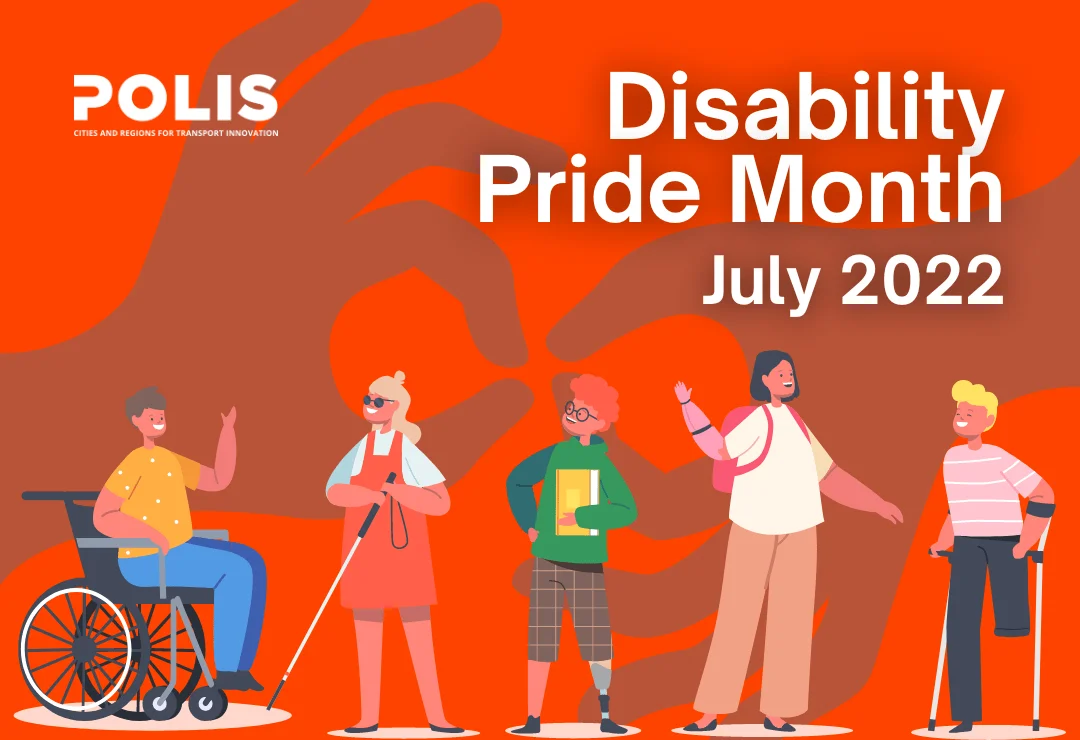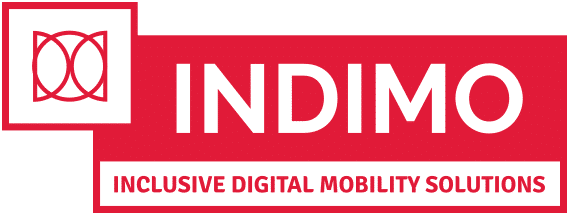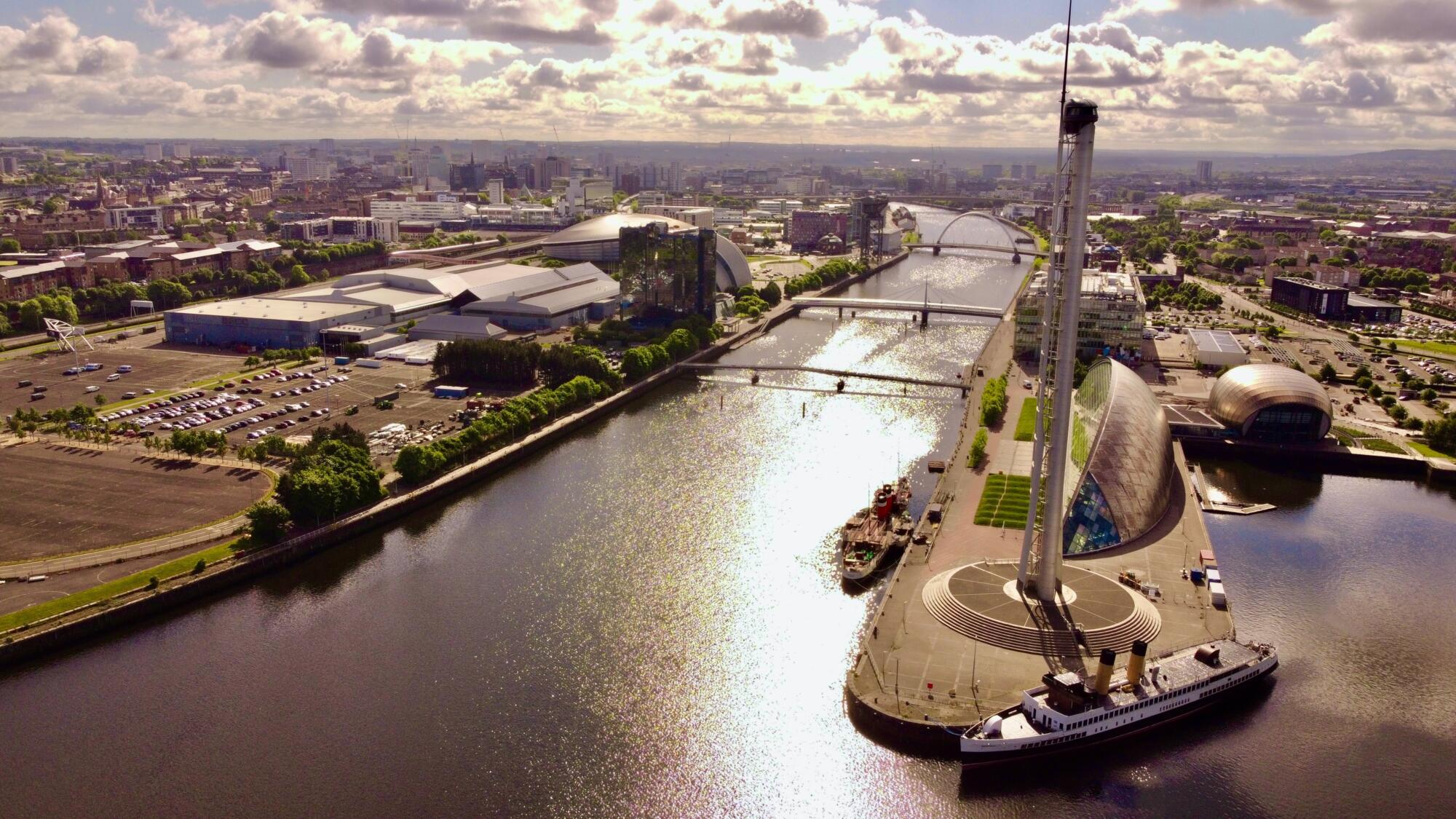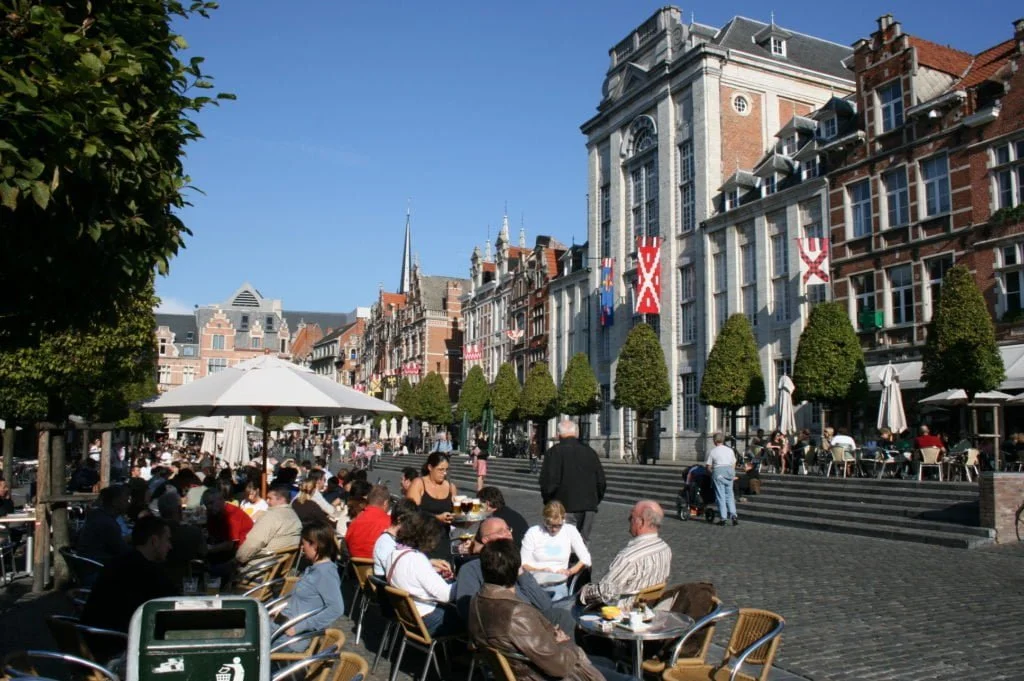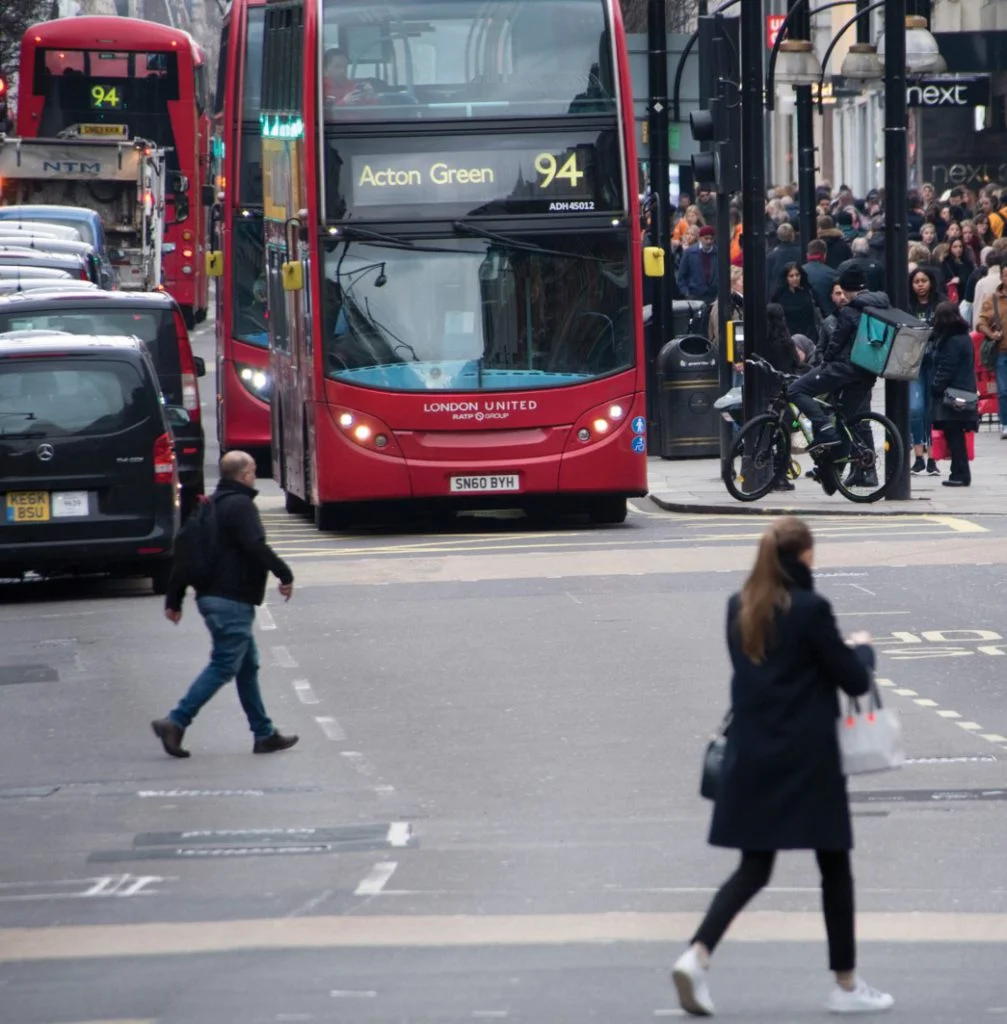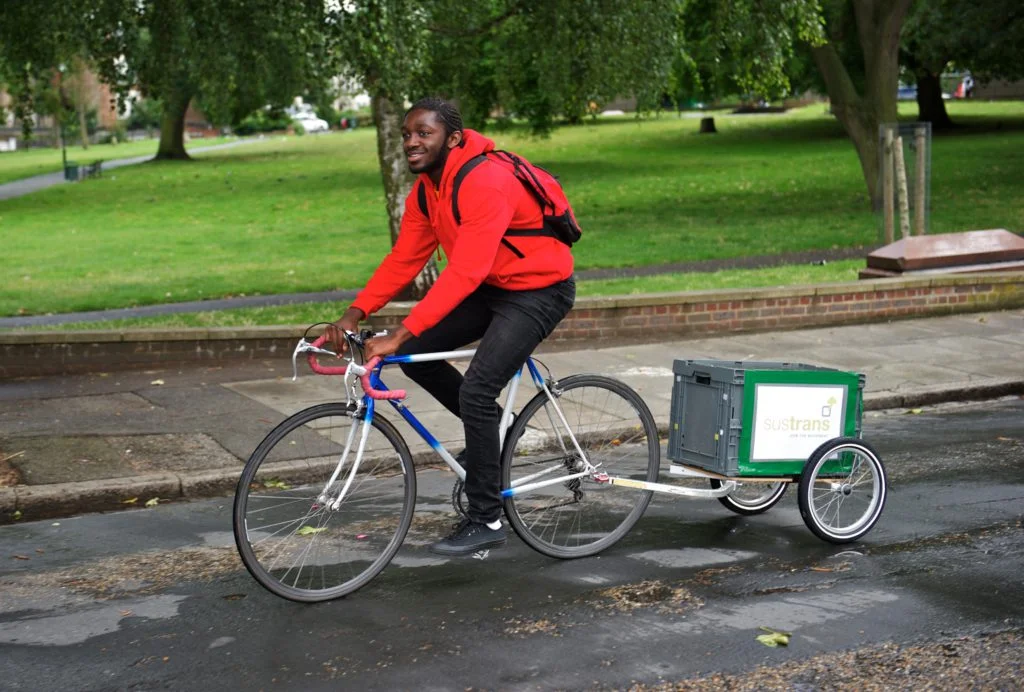Disability Pride Month: How cities can become proud champions of accessibility
As this year's Disability Pride Month draws to a close, POLIS pauses for reflection to understand how to share the experiences of the disabled community, highlight the actions required to make mobility accessible and inclusive and, above all, celebrate disability.
"Disability" is a broad term covering a wide spectrum of physical, sensory, or mental conditions (sometimes apparent, sometimes more concealed) experienced in multiple ways. These conditions shape how individuals — and caregivers — navigate urban mobility services.
Disability Pride Month celebrates individuals with disabilities as core members of our society. For mobility, this means not simply treating those with different physical or cognitive capacities as "fringe" users but as primary transport passenger groups.
Much of our transport infrastructure fails to accommodate people with disabilities. Indeed, across public transport, parking, active travel infrastructure, and digital information platforms, disability is repeatedly an afterthought.
Just last month, we saw the distance we have yet to travel. As air and rail disruptions hit Europe, disability equality charities warned that people with disabilities were amongst the worst affected, experiencing devastating stress and degradation.
Disability Pride Month is the time to reflect on how we can (and must) confront all these issues.
Ain't no transition without a Just Transition
Addressing this inadequacy is non-negotiable in the transition to sustainable urban mobility.
Our transit systems are decisive in enabling (and disabling) travellers' access to fundamental human rights: from education to employment, healthcare, and beyond.
"We can forget Green Deal goals if we exclude entire mobility user groups," says Gabriella Barrera (Director Membership & Finance and working group Coordinator at POLIS Network).
Therefore, as part of POLIS' Just Transition Agenda, we appealed for physical accessibility of streets, interchanges, vehicles, and buildings to be placed front and centre of sustainable mobility planning. This call was reiterated at our Leadership Summit in Glasgow, where leading politicians, practitioners, researchers, advocates, and entrepreneurs from across the UK and the EU transport sector discussed sustainable, safe, innovative, and inclusive transport.

Rafaela Romero, Gipuzkoa | Photo credit: Glasgow City Council
"Transport is the key link between opportunities and the resources available to citizens to make use of them," said Rafaela Romero, Deputy Mayor of Gipuzkoa — a region with fast-expanding transport provisions for vulnerable user groups. "It is therefore essential for the public sector to guarantee a fundamental right to mobility."
Yet, the ways in which much of our urban mobility infrastructure and services are constructed continue to not just aggravate marginalisation for disabled users but also create it.
As the 2006 UN Convention on the Rights of Persons with Disabilities asserts:
"Disability results from the interaction between persons with impairments and attitudinal and environmental barriers that hinders their full and effective participation in society on an equal basis with others."
Faced with deficient elevators, high curbs, and narrow cycle lanes, differently mobile passengers become disabled passengers.
"It is mobility infrastructure itself which disables travellers, the ways we configure our cities to exclude certain bodies and capabilities," said Rita Jacinto (Programme Manager, Division for Pedestrian Accessibility, at the City of Lisbon) while speaking at the Annual POLIS Conference Closing plenary last year in Gothenburg.
Disability driving innovation

Gabriela Barrera, POLIS Network
Cities, operators, and others are introducing new and innovative ways of accommodating different transit needs. Indeed, those striving to be as inclusive as possible are introducing some of the smartest solutions, and it is in transport catered towards disability where we are witnessing some of the most forward-thinking mobility services.
"If we design transport services which work for disabled and older users, then they can work for everyone," asserts Barrera.
In Ile-de-France, the region has partnered with a young French start-up, currently developing the EZYMOB solution. This smartphone app facilitates public transport journeys for the visually impaired, assisting passengers with visual impairments in finding gates, seats, and doors while monitoring stops and journey timetables.
Meanwhile, StreetCo, an application that promotes the mobility of people with reduced mobility, alerts users in real-time of obstacles and informs them about the accessibility of nearby places.
How to make smart tech… smart
Yet, while digital services offer solutions, they also create new barriers. Interfaces that fail to cater to different physical and cognitive capacities risk exacerbating the exclusion they sought to address.
Decision makers and operators must keep this in mind as they continue to roll out online and contactless payments, as well as Mobility as a Service (MaaS) platforms such as London's Oyster Card and Madrid's Madrid 360 app.
A wealth of research, and EU-funded projects such as INCLUSION, reveal that although there has been widespread take up of digital technologies, public transport and new mobility services must continue to be made more inclusive.
Projects like INDIMO and TRIPS offer a blueprint for action. Through comprehensive user engagement approaches, they have developed new ways to empower users in leading the design of inclusive digital mobility solutions while enabling developers, policymakers, and service operators to include these perspectives when dealing with digital mobility solutions.
Such technological advance is to be celebrated, but it does not get to the heart of inclusion.
It is more than simply adding ramps and elevators; rather designing transport systems that cater to people with disabilities means establishing continuous mobility networks and enabling transit from A to B with ease which challenges the personal passenger vehicle.
Here, mental health must also be considered, which merely modifying the physical environment fails to address. As Professor Roger Mackett, a member of the Disabled Persons Transport Advisory Committee (DPTAC), argues, many other people have long-term health conditions which affect their ability to travel, which are not physical or sensory.
Listening to the community
It is imperative to start listening to mobility users with disabilities more comprehensively, on issues ranging from physical infrastructure to bus and train equipment and design to wayfinding.

David Belliard, Paris
"Co-creation" may be somewhat of a catch-all term, but such co-design approaches are critical. This assessment was echoed at POLIS' recent Political Summit in Paris, where mobility decision makers from across Europe attested to the importance of listening to citizens — particularly those often left out of decision-making processes.
"It is about telling citizens, let us understand what you need and how new mobility strategies can be developed in coordination with this need," stressed David Belliard, Paris' Deputy Mayor.
The development of new circulation plans — which cut through-traffic and redirect cars out of the city centre — and Low or Zero-emission Zones (LEZ/ZEZ) — where only low or zero-emission vehicles (ZEVs), pedestrians and, and cyclists are granted unrestricted access — is particularly poignant here.
From Groningen's pioneering circulation plan over 40 years ago to Brussels, Paris, and London's Low and Zero-emission Zones today, these have become a critical part of sustainable mobility planning as cities seek to tackle air pollution and congestion.
However, travellers with disabilities are some of the most affected by such changing mobility structures, and thus comprehensive consultation is integral.
In London, this has meant ensuring their voices are heard during consultation for the Ultra-Low Emissions Zone (ULEZ) — which is due to take effect in August 2023. While the plans include exemptions and discounts for disabled passenger tax class vehicles and wheelchair-accessible private hire vehicles- disruption needs to be fully understood and accounted for. Meanwhile, Leuven's citizen participation model around their circulation plan also inspires the broad partnership required to achieve this.
The 15-minute city… for who?
Including the disabled community in urban planning is equally critical in deploying 15-minute city models, which state that anyone should be able to walk or bike to most essential services within 15 minutes of their home.
Many POLIS members are pioneering this concept. From Barcelona's superblocks to Glasgow's "Livable Neighbourhoods" plan, metropolises of all shapes and sizes have begun to experiment more radically with urban design in ways that fundamentally reshape urban space around sustainable mobility and proximity.
Yet, at the heart of this vision is an unspoken assumption that a "walkable" distance is 15 minutes, or one-quarter of a mile, which, as a recent paper by the Disability Research Initiative reveals, is a privileged means of understanding mobility.
Barcelona's method goes some way to confronting this. As the city divulged at POLIS' recent Active Travel Working Group meeting, slowly scaling up the superblock concept (linking active travel infrastructure and services between individual neighbourhoods) ensures those with differing mobility needs are not locked out of radical changes in transit infrastructure.
So, what is next?
There has been much progress at the international and local levels. EU Regulation on the technical specifications for interoperability and concerning the rights of disabled persons and persons with reduced mobility when travelling have established a set of specific rights to transport and the right to assistance for passengers with disabilities and reduced mobility. At the national level, just this month, new laws in the UK were introduced to ensure assistance when using taxis and private hire vehicles.
Cities are also making great strides in accessibility and have been awarded for their triumphs — indeed, we are proud that the European Accessible Cities list is dominated by POLIS members, from Madrid to Barcelona, London to Gothenburg, Paris, and Berlin. Meanwhile, organisations like Sustrans continually provide valuable and practical policy support with guides for policymakers on inclusive cycling and walking.
Faced with looming climate targets and immediate pressure to decouple ourselves from Russia's hydrocarbon dependency, the race is on to decarbonise transport. As we scale up our sustainable solutions, we need to ensure accessibility for all is at the heart of our new mobility horizons.
Members in the spotlight! What POLIS members are doing to address disability across sustainable mobility
Amsterdam — Mapping access
POLIS member Amsterdam has established a way of mapping the accessibility — and inaccessibility — of the city's public transport services.
The city has been striving to ensure its transit systems are as accessible as possible to those with a wide variety of visual, cognitive, and auditory impairments, creating guidelines that focus on a range of provisions from lighting to seating. To achieve this, the Dutch capital has created criteria of key performance indicators to audit its services. With a panel of specialists and users themselves, they have explored which stations and stops require particular attention. It reported on some good examples and some which required upgrading.
Amsterdam has established an online dashboard that displays the situation across all the city's municipalities, supporting local political leaders to understand the needs in their transport situation and begin to make targeted solutions.
"It is a good start, but it is clear we have much further to go and have much room for improvement," said Stefan Talen from the city while speaking at POLIS' Public Transport Lab webinar.
Leuven — Citizen participation
 The Belgian city — and POLIS President — has received many accolades for mainstreaming accessibility, including in the digital area.
The Belgian city — and POLIS President — has received many accolades for mainstreaming accessibility, including in the digital area.
"Our cooperation model of Leuven2030 in which citizens, companies, as well as research institutes, commit to sustainable mobility and focus on inclusive mobility," says Deputy Mayor David Dessers.
Leuven 2030 is a non-profit organisation which convenes 600 local partners and civil society representatives, all working towards the goal of climate neutrality through small and large-scale actions and projects. An active advisory group also supports the organisation for disabled users and advises on the different mobility rights and supporting measures for disabled people; this really is "With and for the whole of Leuven"!
Vienna — Thinking holistically
Vienna's gender mainstreaming approach also offers an insight into how we rethink how disabled access is built into new and existing urban design. This is not to compare the disabled experience to women in general or repeat the oft-used trope of women as "vulnerable" users; instead, to examine how large proportions of the population's daily movements are not at the core of urban transport.
A gender mainstreaming perspective is about broadening the way we look at the city, how we design it, and for whom," asserted Eva Kail, the renowned Gender Planning Expert. She placed Vienna on the map as the pioneer of gender-inclusive urbanism — at POLIS' Glasgow Summit. "But often it is also about the small investments, making incremental- yet bold- changes which make a real difference in the city."

Photo credits: Glasgow City Council
